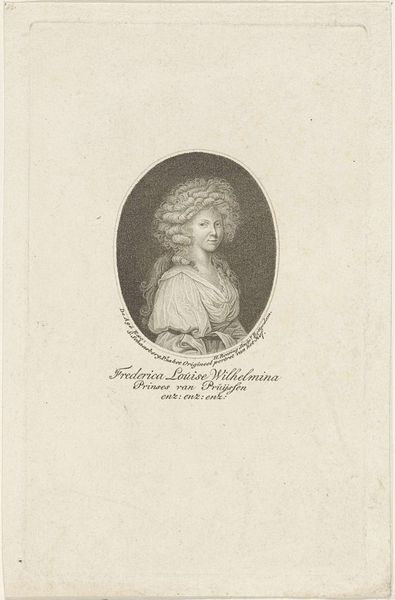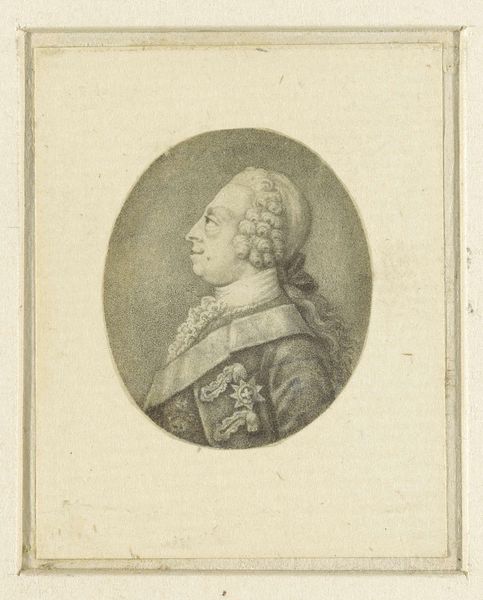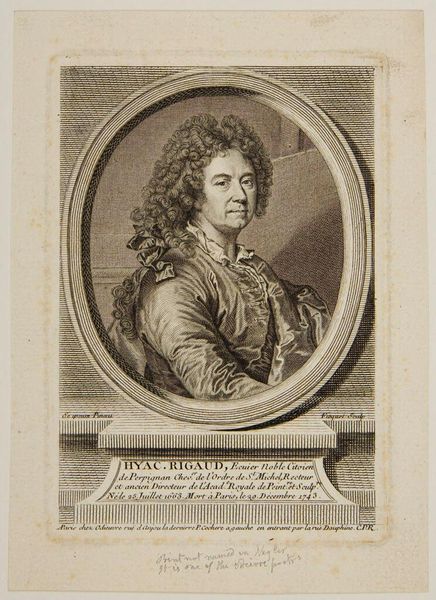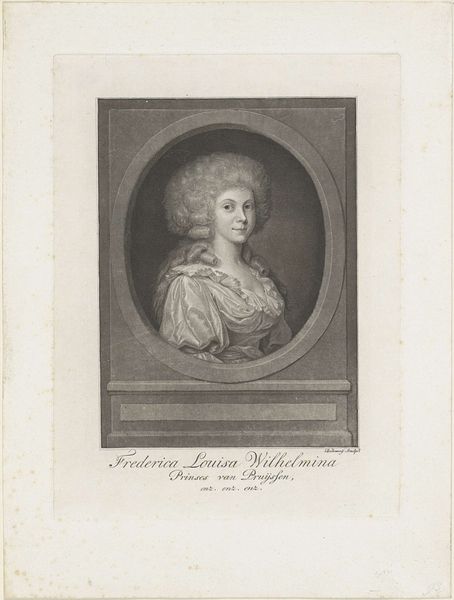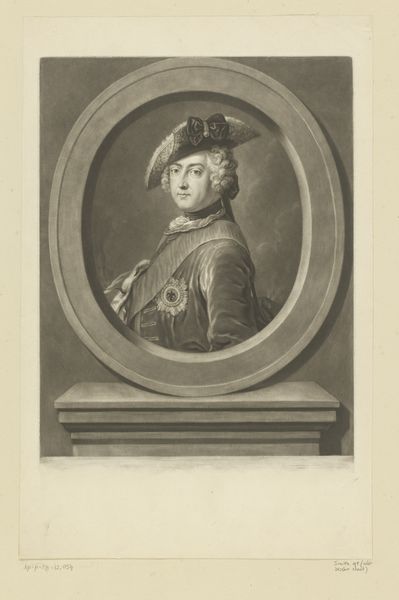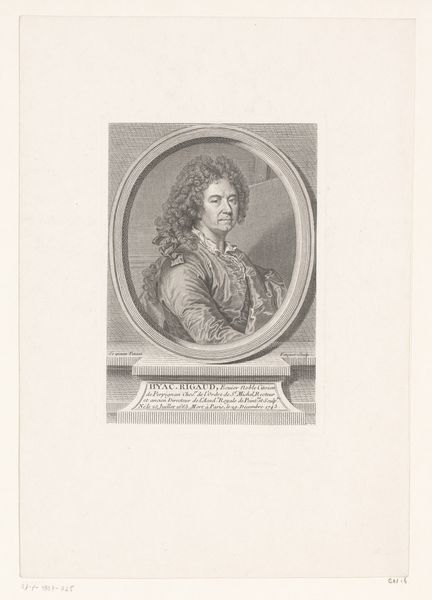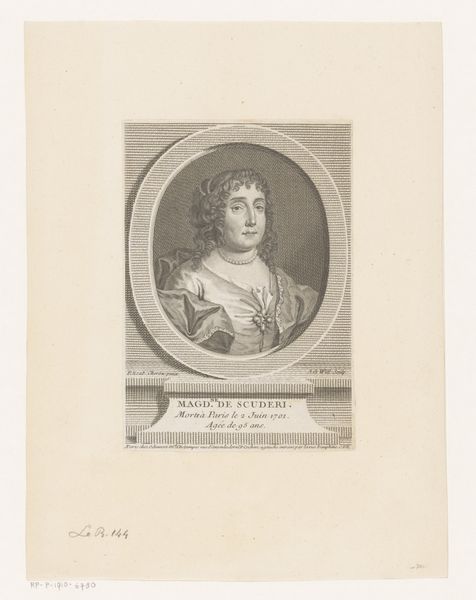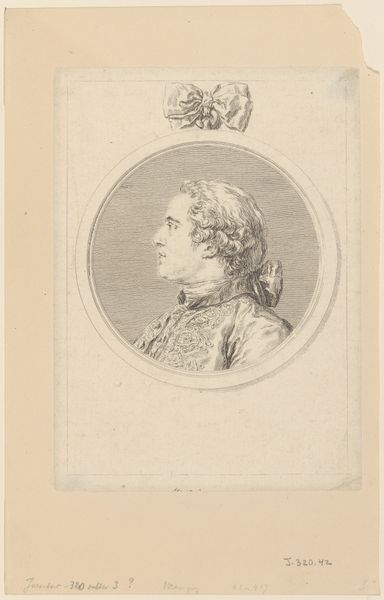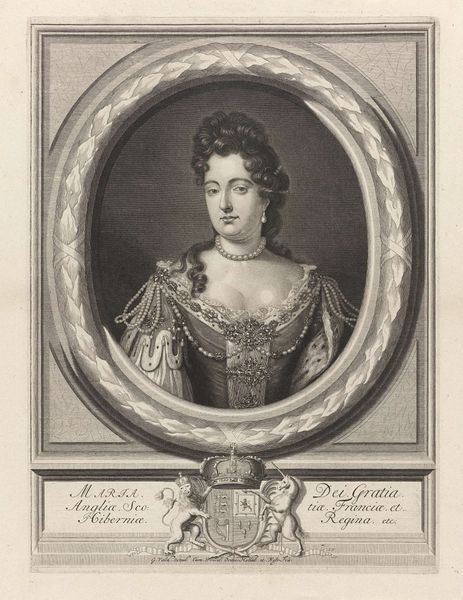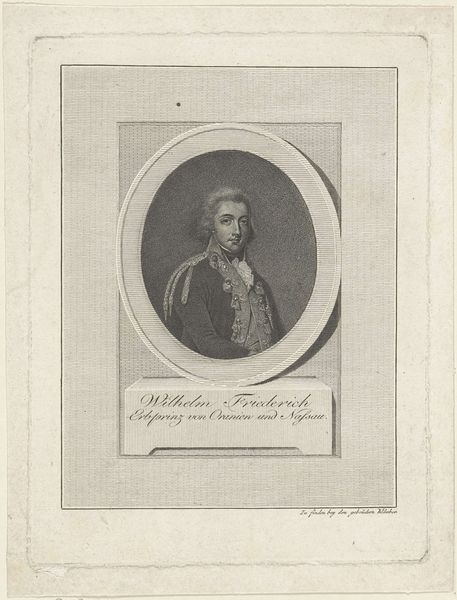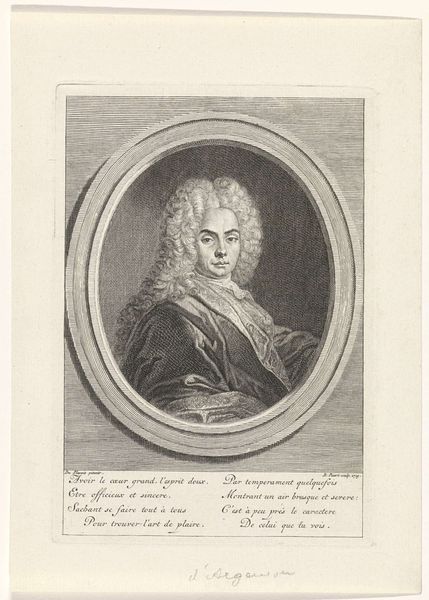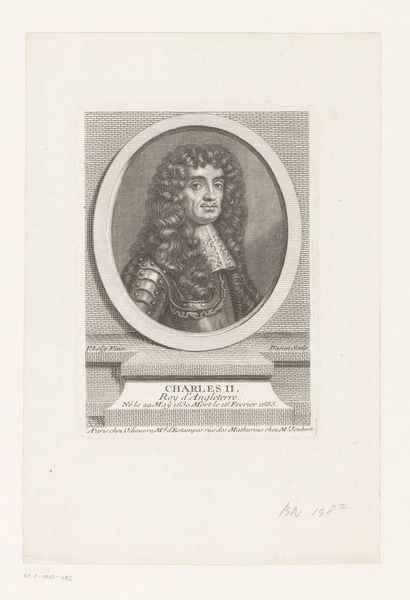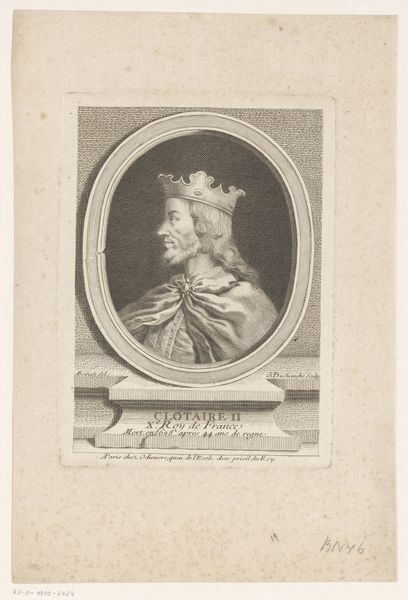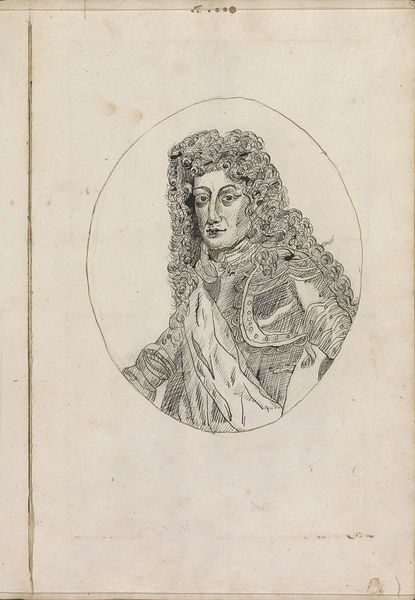
print, engraving
#
portrait
#
neoclacissism
# print
#
old engraving style
#
figuration
#
form
#
line
#
history-painting
#
engraving
Dimensions: height 186 mm, width 111 mm
Copyright: Rijks Museum: Open Domain
Editor: Here we have "Portret van Marie Antoinette," a print from after 1793 currently housed in the Rijksmuseum. It's an engraving, giving it this detailed, almost photographic quality despite its age. I find the medium particularly interesting. What does this print say to you? Curator: For me, this image isn’t just about the Queen; it's a material artifact deeply intertwined with the French Revolution’s complex social landscape. Consider the *process* of engraving: meticulously crafted using specialized tools. It allowed for mass production, a crucial factor in disseminating propaganda – whether for or against the monarchy. Who do you imagine would be commissioning, distributing, and consuming a portrait of Marie Antoinette after her execution? Editor: Perhaps those loyal to the crown who mourned her death or those using the print to denounce the monarchy? Curator: Precisely! And note the materiality. Paper was relatively accessible, making prints an effective tool for broader audiences than paintings. The stark black and white, born of the engraving process itself, adds to a somber mood but it also speaks to accessible artistry, don't you agree? How does this form compare to previous more luxurious portraiture commissioned for/by Marie Antoinette? Editor: That's a great point; it does seem a stark contrast to the extravagant oil paintings usually associated with royalty. So, the means of production really do affect the way the subject is perceived? Curator: Absolutely. This wasn't about celebrating royal power. This print, in its materiality and distribution, is as much a reflection on the revolution itself, the labour of artistic production and the culture of consumption than of the Queen. Editor: That is truly eye-opening, I will definitely be considering materiality going forward. Curator: Indeed! Recognizing the process of artistic production sheds new light on this image.
Comments
No comments
Be the first to comment and join the conversation on the ultimate creative platform.
